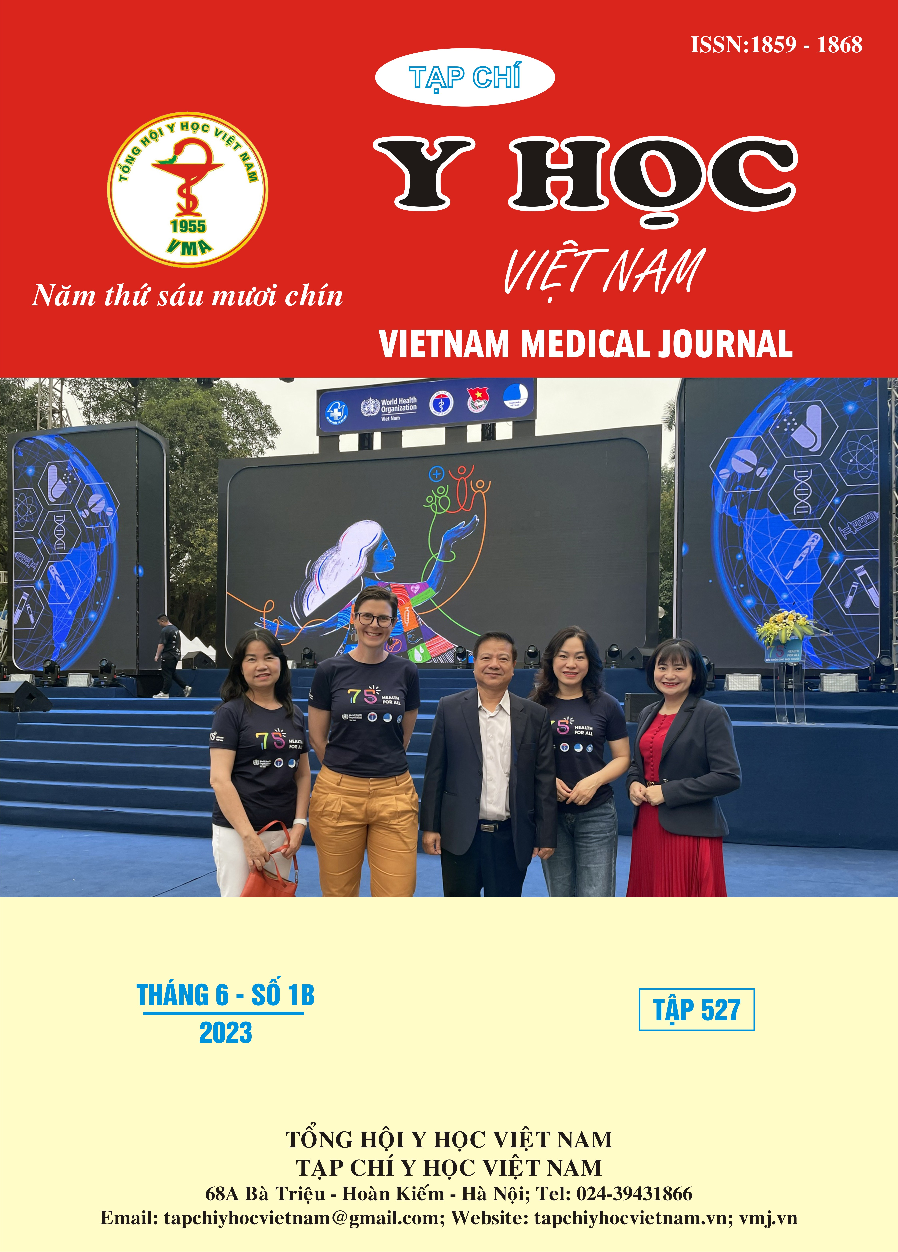CLINICAL AND LABORATORY CHARACTERISTICS OF PATIENTS WITH CHRONIC INDUCIBLE URTICARIA
Main Article Content
Abstract
Objectives: To study patients' clinical features and common laboratory characteristics with chronic inducible urticaria (chronic inducible urticaria-CIndU). Subjects and methods: This was a cross-sectional descriptive study based on data from 142 patients with a confirmed diagnosis of CIndU, who visited the National Hospital of Dermatology and Venereology (NHDV) from July 2021 to July 2022. Results: A total of 142 patients were identified. Symptomatic dermographism (SD) was the most common form, accounting for 46.5% (n=66), followed by choline urticaria (n=55, 38.7%) and cold urticaria (n=18, 12.7%), respectively. Other forms of CIndU such as delayed pressure urticaria, vibratory urticaria,... accounted for 2.1% (n=3). 25.4% of patients had associated chronic spontaneous urticaria (chronic spontaneous urticaria-CSU). CIndU equally affected men and women with p>0,05. The most common age of onset was in the 2nd and 3rd decade, accounting for 45.8% of cases. 64.8% of patients reported a severe impact on their quality of life (Dermatology Life Quality Index-DLQI>10). The mean values of all laboratory parameters were within the normal range. Conclusion: SD was the most common form of CIndU, followed by choline urticaria and cold urticaria. The disease had an early onset at a relatively young age and often associated with CSU. CIndU seriously affects the quality of life of patients.
Article Details
Keywords
Chronic inducible urticaria, chronic spontaneous urticaria, choline urticaria, symptomatic dermographism
References
2. Magerl M, Altrichter S, Borzova E, et al. The definition, diagnostic testing, and management of chronic inducible urticarias - The EAACI/GA(2) LEN/EDF/UNEV consensus recommendations 2016 update and revision. Allergy. 2016;71(6):780-802.
3. Sánchez-Borges M, González-Aveledo L, Caballero-Fonseca F, Capriles-Hulett A. Review of Physical Urticarias and Testing Methods. Curr Allergy Asthma Rep. 2017; 17(8):51.
4. Dice JP. Physical urticaria. Immunol Allergy Clin North Am. 2004;24(2):225-246, vi.
5. Volonakis M, Katsarou-Katsari A, Stratigos J. Etiologic factors in childhood chronic urticaria. Ann Allergy. 1992;69(1):61-65.
6. Dressler C, Werner RN, Eisert L, Zuberbier T, Nast A, Maurer M. Chronic inducible urticaria: A systematic review of treatment options. J Allergy Clin Immunol. 2018;141(5):1726-1734.
7. Zuberbier T, Althaus C, Chantraine-Hess S, Czarnetzki BM. Prevalence of cholinergic urticaria in young adults. J Am Acad Dermatol. 1994;31(6):978-981.
8. Katsarou-Katsari A, Makris M, Lagogianni E, Gregoriou S, Theoharides T, Kalogeromitros D. Clinical features and natural history of acquired cold urticaria in a tertiary referral hospital: a 10-year prospective study. J Eur Acad Dermatol Venereol JEADV. 2008;22(12):1405-1411.
9. Curto-Barredo L, Pujol RM, Roura-Vives G, Gimenez-Arnau AM. Chronic urticaria phenotypes: clinical differences regarding triggers, activity, prognosis and therapeutic response. Eur J Dermatol EJD. 2019;29(6):627-635.
10. Silpa-archa N, Kulthanan K, Pinkaew S. Physical urticaria: prevalence, type and natural course in a tropical country. J Eur Acad Dermatol Venereol JEADV. 2011;25(10):1194-1199.


